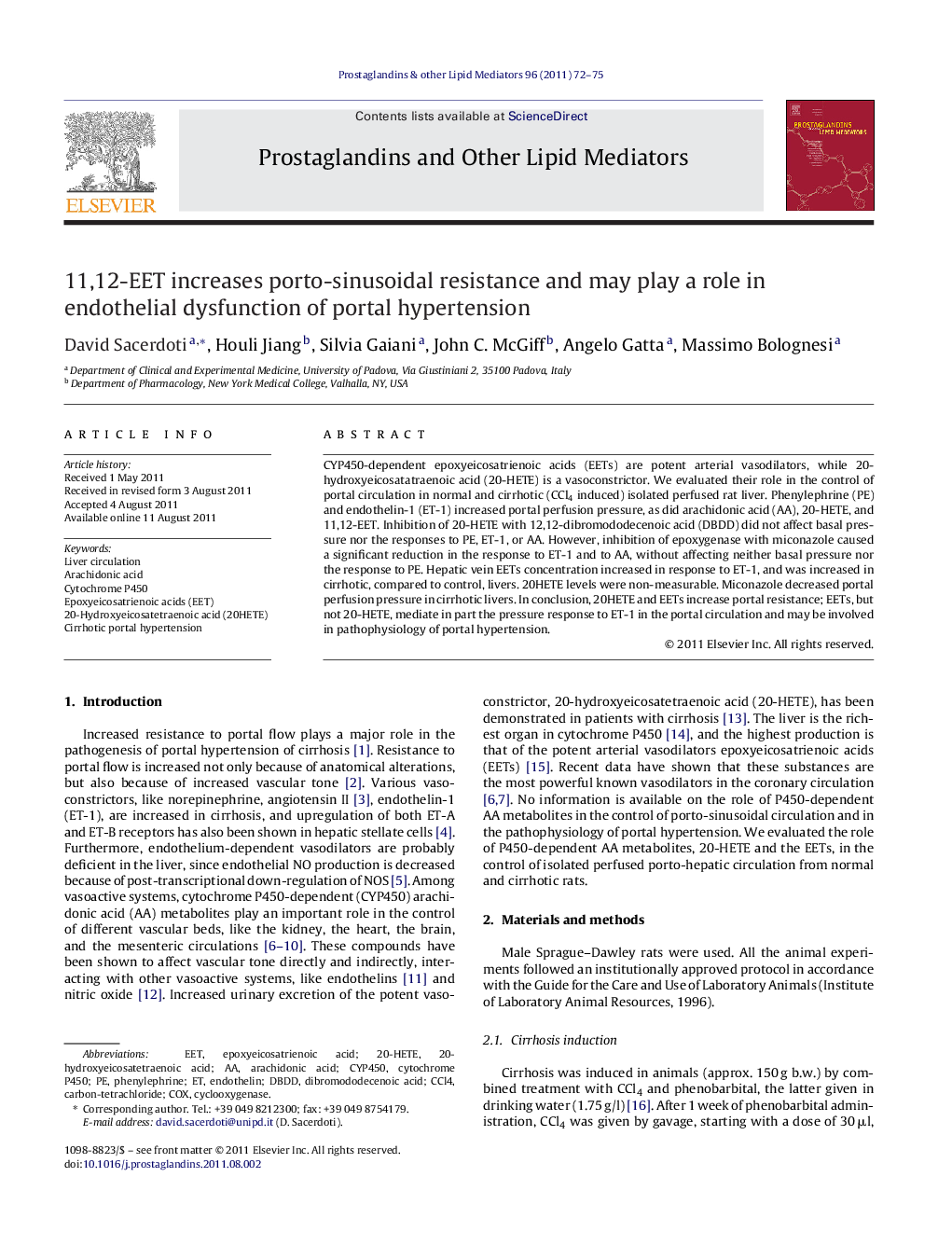| Article ID | Journal | Published Year | Pages | File Type |
|---|---|---|---|---|
| 2019702 | Prostaglandins & Other Lipid Mediators | 2011 | 4 Pages |
CYP450-dependent epoxyeicosatrienoic acids (EETs) are potent arterial vasodilators, while 20-hydroxyeicosatatraenoic acid (20-HETE) is a vasoconstrictor. We evaluated their role in the control of portal circulation in normal and cirrhotic (CCl4 induced) isolated perfused rat liver. Phenylephrine (PE) and endothelin-1 (ET-1) increased portal perfusion pressure, as did arachidonic acid (AA), 20-HETE, and 11,12-EET. Inhibition of 20-HETE with 12,12-dibromododecenoic acid (DBDD) did not affect basal pressure nor the responses to PE, ET-1, or AA. However, inhibition of epoxygenase with miconazole caused a significant reduction in the response to ET-1 and to AA, without affecting neither basal pressure nor the response to PE. Hepatic vein EETs concentration increased in response to ET-1, and was increased in cirrhotic, compared to control, livers. 20HETE levels were non-measurable. Miconazole decreased portal perfusion pressure in cirrhotic livers. In conclusion, 20HETE and EETs increase portal resistance; EETs, but not 20-HETE, mediate in part the pressure response to ET-1 in the portal circulation and may be involved in pathophysiology of portal hypertension.
► The liver is an organ rich in CYP450. ► CYP450-dependent epoxyeicosatrienoic acids (EETs) are potent vasodilators while 20-hydroxyeicosatetraenoic acid (20-HETE) is a vasoconstrictor and they may regulate portal hemodynamics. ► 20-HETE and 11,12-EET increase portal perfusion pressure in isolated perfused liver. ► 11,12-EET mediates the vasoconstricting effect of endothelin-1 in the portal circulation. ► 11,12-EET is increased in cirrhotic portal circulation and plays a role in portal hypertension.
